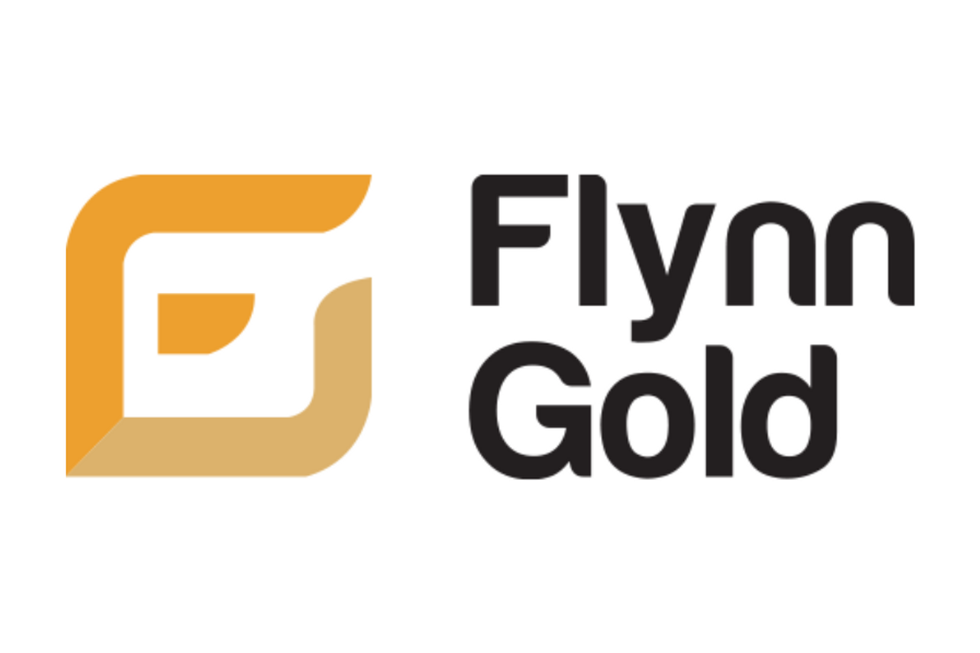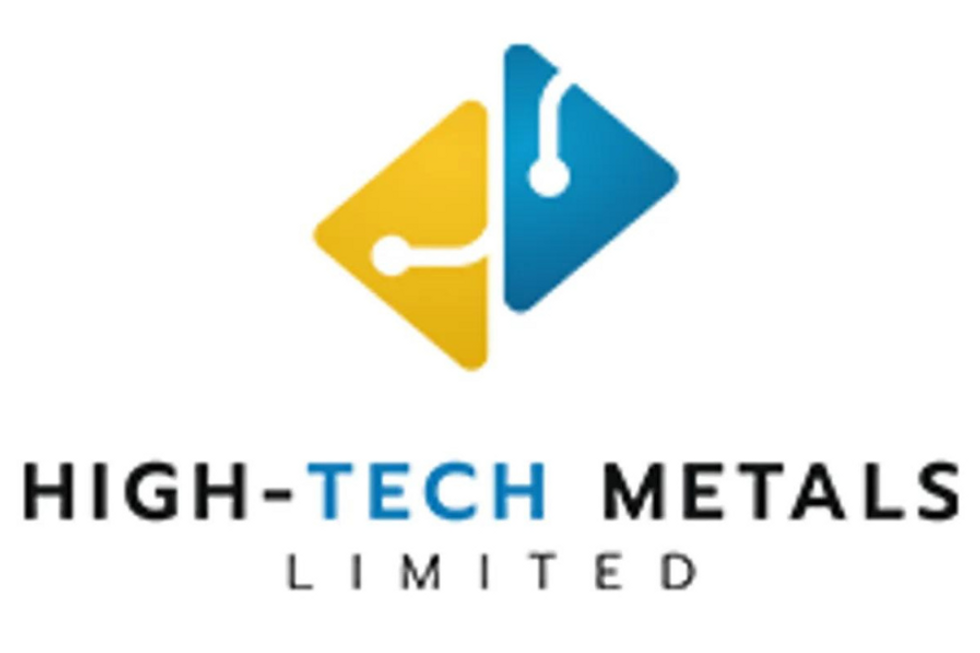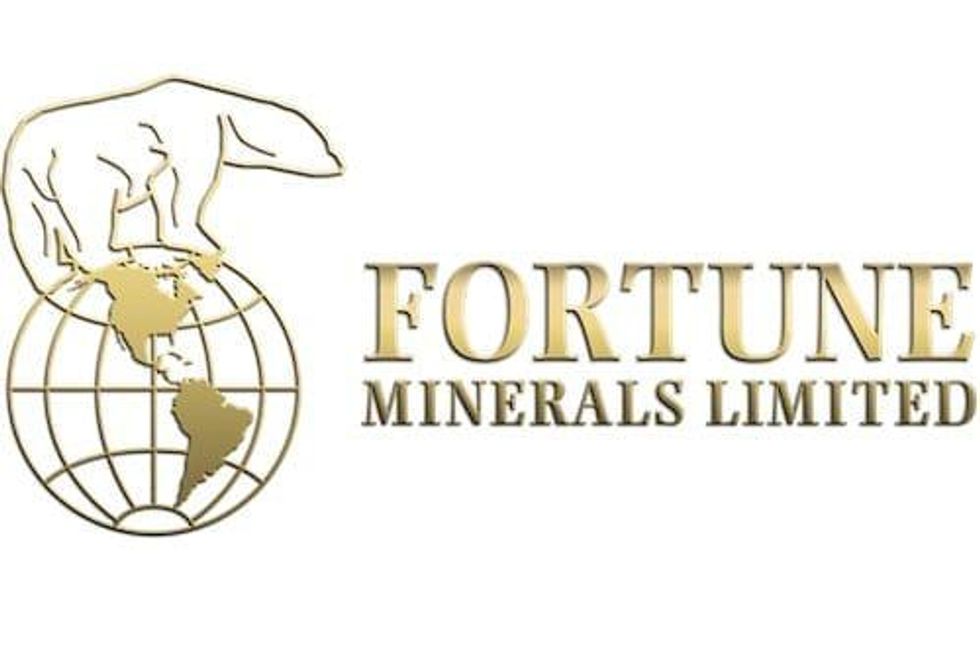Battery Metals
Outlook Reports
Featured Battery Metals Investing Stocks
Investor Insight
NextSource Materials is an emerging leader in the global battery materials sector, backed by a world-class graphite resource and proven technology to produce high-performance anode material. With a focus on full vertical integration, the company is strategically positioned to supply critical materials essential to the global clean energy transition.
Overview
NextSource Materials (TSX:NEXT,OTCQB:NSRCF) is a Canadian-based battery materials development company focused on becoming a vertically integrated global supplier of critical minerals essential to the global clean energy transition. The company’s strategy spans the full value chain – from mining and upgrading high-quality flake graphite to producing advanced battery anode materials – positioning it as a key supplier to the rapidly growing electric vehicle (EV) and renewable energy storage markets.
NextSource’s core asset is the Molo graphite mine in Madagascar, one of the largest and highest-grade flake graphite deposits in the world. Commencing production in October 2024, the Molo mine has a resource base of more than 153 million tonnes and the exclusive source of NextSource’s trademarked SuperFlake® graphite.

Complementing the Molo graphite mine is the company’s downstream expansion through battery anode facilities (BAFs), which will convert its proprietary SuperFlake® graphite into spherical purified graphite (SPG) and coated SPG (CSPG), enabling direct supply to global battery and automotive manufacturers outside traditional Asian supply chains.
Global demand for flake graphite, valued at US$3.12 billion in 2024, is forecast to grow to US$5.48 billion by 2034, driven by a 6.1 percent CAGR. This growth is primarily fueled by the expansion of lithium-ion battery manufacturing for EVs and renewable energy systems, where graphite remains the dominant material used in battery anodes.
NextSource also owns the Green Giant vanadium project, an advanced-stage and strategically significant vanadium asset located near the Molo mine. With a large, sediment-hosted deposit suited for vanadium redox flow batteries (VRFBs), Green Giant provides additional exposure to the grid-scale energy storage market – a rapidly emerging segment of the clean energy landscape.
NextSource has assembled an impressive leadership team with a proven track record in mine operations and building shareholder value. With long-term offtake agreements in place, a scalable mine-to-anode business model, and strategic backing from Vision Blue Resources, led by former Xstrata CEO Sir Mick Davis, NextSource is positioned to deliver significant value as a secure and sustainable supplier of critical battery materials.
Company Highlights
- Molo Graphite Project: The Molo graphite project in Madagascar is among the world’s largest and highest-quality graphite resources and is the exclusive source of SuperFlake® graphite.
- First Commercial Shipments Completed: SuperFlake® shipments have been to multiple end-users and approved for high-demand applications for flake graphite, including battery anodes, refractory and graphite foils for fire retardants and consumer electronics.
- Long-term Offtake Agreements: One of the few graphite producers globally to secure long-term sales agreements with tier one partners, including a 20,000 tpa agreement with a leading Japanese trader that supplies intermediate anode material to the Japanese market, and a 35,000 tpa agreement with thyssenkrupp Materials Trading GmbH for SuperFlake® graphite concentrate.
- Mine Expansion Planned: With anticipated volume demands expected to quickly outgrow its Phase 1 volume capacity, NextSource updated its operational strategy to utilize Phase 1 for campaign production to focus on development of its Phase 2 mine expansion.
- Downstream Value-add Expansion: The company is executing a phased rollout of battery anode facilities to produce spherical purified graphite and coated SPG at commercial scale. These facilities will supply high-performance anode material directly to battery and automotive manufacturers outside traditional Asian supply chains.
- Strategic Shareholder Support: Vision Blue Resources, a battery materials investment fund led by former Xstrata CEO Sir Mick Davis, is NextSource’s corner-stone shareholder. Sir Mick Davis also serves as NextSource’s chairman, bringing decades of mine development and operational leadership to the company.
- Vanadium Exposure: NextSource also holds the Green Giant vanadium project in Madagascar, an advanced-stage NI 43-101 resource and one of the world’s largest known sedimentary vanadium (V2O5) deposits.
Key Projects
Molo Graphite Mine and Project

NextSource’s flagship Molo graphite project ranks as one of the largest-known and highest-quality flake graphite deposits in the world. The property spans more than 62.5 hectares, sits in the Tulear region of Southwestern Madagascar, and is located 11.5 kilometers east of the town of Fotadrevo. Phase 1 of the mine is currently in operation.
NextSource has superior flake size distribution and well above the global average. The Molo asset is relatively unique for having almost 50 percent premium-priced large and jumbo flake graphite and can achieve up to 97 percent carbon purity with simple flotation alone. Molo SuperFlake® has been verified by end-users and meets or exceeds all criteria for the top demand markets for flake graphite; anode material for lithium-ion batteries, refractories, graphite foils and graphene inks.
Project Highlights
Geological and Resource Overview:
- Measured and indicated resources: 100.37 million tonnes (Mt) at 6.3 percent total graphitic carbon (C), based on a 2 percent C cut-off.
- Proven and probable reserves: 53.75 Mt at 6.2 percent C, based on a 3 percent C cut-off, including 21.33 Mt proven and 32.41 Mt probable.
- Over 300 km of continuous surface graphite mineralization has been delineated, enabling flexible, demand-driven production scale-up.
- The resource base supports more than 100 years of mine life at 17,000 tpa and 25+ years at 150,000 tpa production levels.
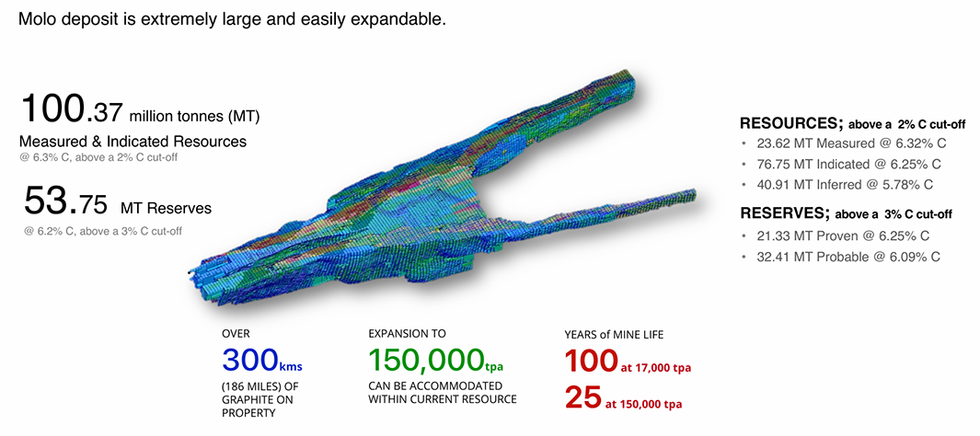
Operational Status:
- Phase 1 operations commenced production in October 2024, with the first commercial shipments of SuperFlake® graphite concentrate delivered to customers in Germany and the US in early 2025.
- In May 2025, NextSource transitioned Phase 1 to campaign production in order to preserve capital and prioritize the larger Phase 2 expansion, which is now the operational focus.
- Nameplate capacity for Phase 1 is 17,000 tpa, with modular Phase 2 plans targeting up to 150,000 tpa production capacity.
Strategic Sales Agreements:
- A 35,000 tpa SuperFlake® graphite offtake agreement with thyssenkrupp Materials Trading GmbH.
- A 20,000 tpa agreement with a leading Japanese trader that supplies anode material to major OEM supply chains (Tesla, Toyota).
Battery Anode Facilities
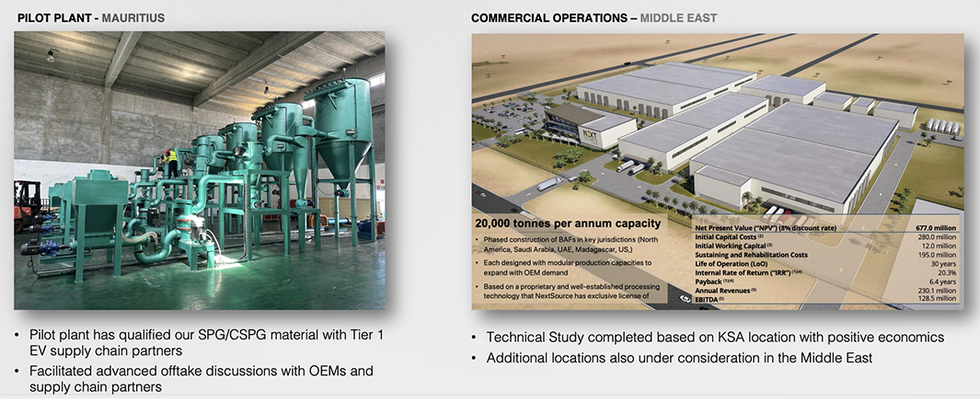
NextSource’s BAFs are value-added processing plants designed to convert smaller flake graphite into high-performance anode material, an essential component of lithium-ion batteries used in electric vehicles.

Project Highlights
Technology and Product Focus:
- Using a proprietary and proven processing technology, licensed exclusively by NextSource and currently supplying major OEMs, the BAFs will produce spherical purified graphite (SPG) and coated SPG (CSPG) through a process verified within, and currently being used by, the Tesla and Toyota supply chains.
- The CSPG production process involves micronizing flake graphite, shaping it into spheres (spheroidization), purifying it and applying a hard carbon coating to enhance durability and performance in battery applications.
Pilot to Commercial Progression:
- A pilot BAF in Mauritius successfully validated NextSource’s processing technology and facilitated advanced product qualification with Tier 1 EV and battery manufacturers.
- In 2025, the company redirected its BAF expansion focus from Mauritius to the Middle East, identifying Saudi Arabia and the UAE as ideal first locations due to favorable permitting, infrastructure, and access to global EV markets.
Strategic Plans and Economic Advantages:
- NextSource’s established technical process gives it a competitive advantage by significantly reducing the time and cost required for R&D and qualification phases.
- The modular BAF rollout strategy supports flexible scaling, with additional facilities planned for North America, Europe, and Asia to meet growing OEM demand.
- Feedstock will be sourced primarily from the Molo Mine, with provisions for qualified third-party graphite as needed.
Green Giant Vanadium Project
The Green Giant vanadium project is a 100-percent-owned, advanced-stage exploration asset located in south-central Madagascar, approximately 15 kilometers from the Molo Graphite Mine. It is one of the world’s largest known vanadium deposits and a potential future growth driver for NextSource.
Project Highlights
Resource Profile:
- NI 43-101 compliant resource of approximately 60 million tonnes, grading an average of 0.7 percent vanadium pentoxide at a 0.5 percent cut-off.
- The deposit is sediment-hosted, a rare geological profile seen in only about 5% of vanadium occurrences, and favorable for producing high-purity vanadium compounds.
Strategic Importance:
- Vanadium is a key material in vanadium redox flow batteries (VRFBs), which are emerging as a critical solution for long-duration grid-scale energy storage—a necessary component of the transition to renewable power.
- With increasing global focus on decarbonizing power systems, Green Giant provides long-term optionality in a growing adjacent market.
Development Status:
- Over US$20 million has been invested in exploration and development since acquisition in 2007.
- While currently on hold to maintain focus on graphite and anode material commercialization, the project remains a strategic asset for future energy storage market expansion.
Management Team
Hanré Rossouw - President and Chief Executive Officer, Director
Hanré Rossouw joins NextSource from his role as executive director and chief financial officer of Sasol Limited with extensive experience in the global natural resources industry over the last 25 years. A British and South African national, Rossouw has held senior positions in leading global mining and investment companies where his roles involved business development, M&A, capital markets, asset management and growth optimization.
Craig Scherba - Chief Development Officer, Director
Craig Scherba brings extensive operational and geologic experience, having discovered both the Molo and Green Giant deposits. He currently heads up development of NextSource’s downstream OEM offtake strategy and plans.
Jaco Crouse - Chief Financial Officer
Jaco Crouse brings over 20 years of experience in the global natural resources sector, with expertise in M&A, capital markets and financial strategy. He held senior positions at Glencore and Xstrata.
Brent Nykoliation - EVP, Strategy and Corporate Affairs
Brent Nykoliation joined the senior management team at NextSource Materials as vice-president in 2007 and leads strategy and corporate affairs for the company. In addition, he oversees all communications with graphite customers, institutional investors and analysts for the company.
He brings over 20 years of senior management experience, having held marketing and strategic development positions with several Fortune 500 corporations in Canada.
Dr. Tilo Hauke - EVP, Downstream Operations
Dr. Tilo Hauke leads the development of the company’s BAFs, focused on producing commercial-scale graphite anode material for lithium-ion batteries used in electric vehicles. He previously spent two decades at SGL Carbon SE, a global leader in carbon and graphite products, holding senior roles including SVP of Fuel Cell Components and Group VP of Technology and Innovation.
Danniel Stokes - VP, Special Projects
Daniel Stokes spearheads the project management aspects of the company, with significant experience across a diverse portfolio of projects in mining, infrastructure and nuclear industries.
Markus Reichardt - VP, Sustainability
Markus Reichardt is responsible for driving the company’s safety, health, environment, social, climate change and quality performance and initiatives. He has a 25-year track record in operational, senior corporate and advisory roles in the resources, agricultural and renewables sectors across the developing world.
Jean Luc Marquetoux - Country Manager
Jean Luc Marquetoux brings nearly three decades of experience in mining and project development in Madagascar and brings deep regional and governmental expertise in Madagascar.
Board of Directors
Sir Mick Davis - Chairman
Sir Mick Davis is the CEO of Vision Blue Resources and a highly successful mining executive accredited with building Xstrata plc into one of the largest mining companies in the world before its acquisition by Glencore plc.
Ian Pearce – Director
Ian Pearce is the former CEO of Xstrata Nickel, and was the former COO of Falconbridge Limited, which was acquired by Xstrata Plc in 2006. Xstrata Plc’s acquisition of Falconbridge was one of the largest mining takeovers globally and one of the largest takeover bids in Canadian history.
Brett Whalen — Director
Brett Whalen has over 20 years of investment banking and M&A expertise, spending over 16 of those years at Dundee Corporation. During his tenure at Dundee, Whalen was directly involved in completing approximately $2 billion in M&A deals and helped raise over $10 billion in capital for resource sector companies.
Christopher Kruba - Director
Christopher Kruba is vice-president and legal counsel to Nostrum Capital Corporation and several related corporations that are part of the Toldo Group.
Martina Buchhauser - Director
Martina Buchhauser is a globally recognized leader in the automotive industry, with deep expertise in sustainable mobility and the transition to low-carbon, responsible business practices. Her executive career includes senior roles in global procurement and supply chain management at General Motors, MAN, BMW, and most recently Volvo Cars.

Investor Insight
With a clear vision for value creation in the energy transition and precious metals sectors, Surface Metals has strategically assembled one of North America’s most compelling project portfolios. Anchored by a high-potential gold asset and a robust lithium pipeline, the company is focused on discovery-driven growth, resource development, and unlocking long-term shareholder value through exploration, partnerships and potential M&A.
Overview
Surface Metals (CSE:SUR,OTCQB:SURMF) is a diversified exploration and development company with a portfolio spanning precious metals and lithium, targeting the growing global need for electrification metals and gold as a financial hedge.

The company’s flagship Cimarron gold project in Nevada is an underexplored, high-grade oxide gold system with historic drilling by majors including Newmont and Echo Bay. Simultaneously, Surface Metals, through its subsidiary ACME Lithium US, is developing lithium projects across Nevada and Manitoba, Canada. These include the Clayton Valley lithium brine asset (with a defined resource), the claystone-hosted Fish Lake Valley project, and the pegmatite-rich Shatford and Cat-Euclid claims in partnership with Snow Lake Resources.

Surface Metals’ projects are located in prolific mining jurisdictions in Nevada and Manitoba
With a foundational 43-101 resource, compelling exploration upside, and strategic positioning next to producing and near-producing lithium assets, Surface Metals is building value from the ground up.
Company Highlights
- Dual Focus Portfolio: Combines precious metals and energy transition minerals, including a 90 percent stake in the Cimarron gold project and multiple lithium assets in Nevada and Manitoba.
- Gold Asset with Legacy Database: Cimarron contains over 190 historical drill holes with high-grade intercepts and a non-compliant historic resource of 50,000+ oz gold, open in multiple directions.
- NI 43-101 Lithium Resource: The Clayton Valley project hosts an inferred lithium carbonate equivalent (LCE) resource of 302,900 tonnes, backed by geophysics, drilling and pumping test data.
- Strategic Lithium Locations: Lithium claims are adjacent to Albemarle’s Silver Peak mine and Ioneer’s Rhyolite Ridge development in Nevada, and contiguous to the Tanco mine in Manitoba.
- Experienced Leadership: Led by resource sector veterans with a track record of successful exits, technical development and public company management.
- Energy Transition Strategy: Well-positioned to benefit from macro tailwinds in lithium demand and US domestic critical minerals supply chain policies.
Key Projects
Cimarron Gold Project

The Cimarron gold project is a high-grade epithermal gold exploration project located at the north end of the San Antonio Mountains in the historic San Antonio (Cimarron) mining district, approximately 18 miles north of Tonopah, Nevada. Surface Metals holds a 90 percent interest in the project through its US subsidiary, Surface Metals US Inc. The project comprises 31 lode claims and is characterized by shallow, structurally controlled, low-sulfidation oxide gold mineralization.
Cimarron lies at the intersection of two regionally significant gold trends: the northwest-trending Walker Lane Belt and a north-northeast trend hosting Round Mountain (Kinross), Bullfrog, Goldfield, Manhattan and Gold Hill deposits. Notably, Round Mountain—located just 28 miles north—has produced more than 15 million ounces of gold. The project benefits from excellent infrastructure, including nearby power, road access and historic drill pads.

Aerial view of the project property
From 1980 to 2004, significant historical exploration was conducted by major operators such as Newmont, Echo Bay, Romarco and Budge. More than 190 drill holes define three main mineralized zones: West, Central and East. Echo Bay's internal reports (1987) estimated a non-NI 43-101 compliant resource of over 50,000 oz of gold hosted in approximately 1.5 million tons (Mt), with roughly 80 percent of the ounces located in the West Zone. Historic high-grade intercepts include:
- 4.46 grams per ton (g/t) gold over 11 m
- 4.49 g/t gold over 23 m
- 3.94 g/t gold over 46 m
Mineralization remains open in multiple directions, and surface sampling has returned anomalous gold values across a wide area, indicating strong potential for both lateral and vertical extensions. The mineralized system features strong structural controls and is interpreted to be part of a shallow, boiling zone epithermal system.
Surface Metals is currently finalizing its 2025/2026 exploration interpretation and strategy to potentially expand the known mineralized envelope and produce an NI 43-101 compliant resource estimate.
Clayton Valley Lithium Brine Project

The Clayton Valley Project, held through Surface’s subsidiary ACME Lithium US, is located in Esmeralda County, home to the only operating lithium brine mine in the United States: Albemarle’s Silver Peak mine. ACME’s 100 percent interest covers 122 placer claims totaling 2,440 acres in one of the world’s most prolific lithium-producing basins.
The project hosts a defined NI 43-101 inferred resource of 302,900 tons of lithium carbonate equivalent (LCE), based on extensive geophysical surveys (gravity and HSAMT), Phase 1 and Phase 2 drilling, and a 10-day pump test. The brines are hosted in interbedded silts, clays, sand and gravel, with lithium concentrations in brine ranging from 38 to 130 mg/L. Borehole DH-1 confirmed brine presence from 85 meters to 370 meters, with increased concentrations in basal gravels and lacustrine tuff layers.
Phase 2 drilling (DH-1A and TW-1) reached a depth of 1,940 ft, intersecting the Lower Gravel Unit (LGU), interpreted as the main brine aquifer. Pack testing and zone-isolated sampling from the LGU showed lithium values up to 71 mg/L. Permeability tests demonstrated favorable aquifer transmissivity. The presence of bicarbonate-rich groundwater indicates typical Clayton Valley geochemistry, conducive to direct lithium extraction (DLE) processing. Surface is currently evaluating DLE partnerships and pilot testing, with SLB (formerly Schlumberger) having already demonstrated a working DLE unit in the region.
Fish Lake Valley Lithium Claystone Project

The Fish Lake Valley (FLV) project is a 100 percent owned sedimentary lithium claystone asset covering 207 claims across 4,002 acres in Esmeralda County. The project is strategically adjacent to Ioneer’s fully permitted and DOE-funded Rhyolite Ridge lithium-boron project, with expected commencement of construction in 2025 and offtake agreements with Ford, Panasonic and Toyota.
FLV hosts lithium values up to 1,418 parts per million (ppm) in surface samples, with boron anomalies as high as 1,964 ppm—both strong indicators of favorable sedimentary lithium potential. Two major field sampling programs (2022 and 2023) confirmed the widespread presence of lithium-bearing illite-smectite clays. Phase 2 sampling utilized Asterra’s satellite analytics to identify new mineralized zones.
Geophysical surveys, including gravity and HSAMT, confirm the presence of a deep down-dropped basin with clay-rich horizons extending to over 1.3 km depth. Interpreted illite-smectite units, comparable to Rhyolite Ridge’s host rocks, are present throughout the basin. The project is fully permitted for drilling, with multiple high-priority drill targets identified for validation and resource definition. Surface is actively seeking a JV or strategic partner to fund and advance this asset.
Shatford, Birse and Cat-Euclid Lake Lithium Projects
Surface Metals, in partnership with Snow Lake Resources (Nasdaq:LITM), holds a 49 percent interest in a 17,000-acre pegmatite exploration portfolio in southeastern Manitoba, contiguous with the Tanco mine, Canada’s only operating LCT (lithium-cesium-tantalum) pegmatite mine, owned by Sinomine.
The Shatford Lake project comprises 21 claims (8,883 acres), Birse Lake adds another 10 claims (5,196 acres), and the Cat-Euclid block includes six claims (2,930 acres). The claims straddle the Greer-Shatford Shear Zone, a major 15-km structural corridor hosting known pegmatites, favorable host rocks and historic lithium occurrences.

Snow Lake’s 2024 field campaign discovered a 25 m to 30 m wide tantalite-bearing pegmatite on the Cat-Euclid block and identified multiple new pegmatite swarms under heavy overburden. Drilling at Shatford Lake (2023) included eight holes totaling 3,280 meters, intersecting pegmatites in six holes. 3D modeling of airborne magnetic data correlated structural dilation zones with pegmatite emplacement, prime targets for lithium mineralization. Multiple new drill targets have been identified for follow-up in 2025. The joint venture provides a low-cost pathway to potential lithium discoveries near a fully integrated lithium processing facility.
Management Team
Stephen Hanson – President, CEO and Director
With over 28 years of global experience in finance and corporate development, Stephen Hanson has held executive roles across mining, energy and resource sectors. He has successfully executed M&A deals and created exit strategies for multiple public and private companies. Hanson’s focus at Surface Metals is on unlocking value through resource expansion and strategic partnerships.
Zara Kanji – CFO and Corporate Secretary
A CPA with deep experience in financial reporting for junior mining companies, Zara Kanji oversees compliance, budgeting, and financial strategy. She brings more than two decades of expertise in audit, taxation and advisory for public entities in Canada.
Vivian Katsuris – Director
A capital markets specialist with over 28 years of experience, Vivian Katsuris has served in executive and board roles for numerous TSXV and CSE-listed companies. Her expertise spans brokerage, corporate governance and strategic advisory.
Yannis Tsitos – Director
Formerly with BHP Billiton for 19 years, Yannis Tsitos has decades of exploration and M&A experience across multiple continents. He is currently the president of Goldsource Mines and sits on several public company boards.
William Feyerabend – Qualified Person (US Projects)
A certified professional geologist and NI 43-101 Qualified Person, William Feyerabend has authored multiple technical reports on lithium assets and has decades of exploration experience in the US, Mexico and South America.
Dane Bridge – Technical Advisor
With over 45 years in global mineral exploration and mine evaluation, Dane Bridge provides strategic technical oversight across Surface’s exploration assets.
Matt Banta – Technical Advisor
A specialist in hydrology and lithium brine systems, Matt Banta brings over 20 years of field and analytical experience with a focus on lithium extraction and water resource modeling.
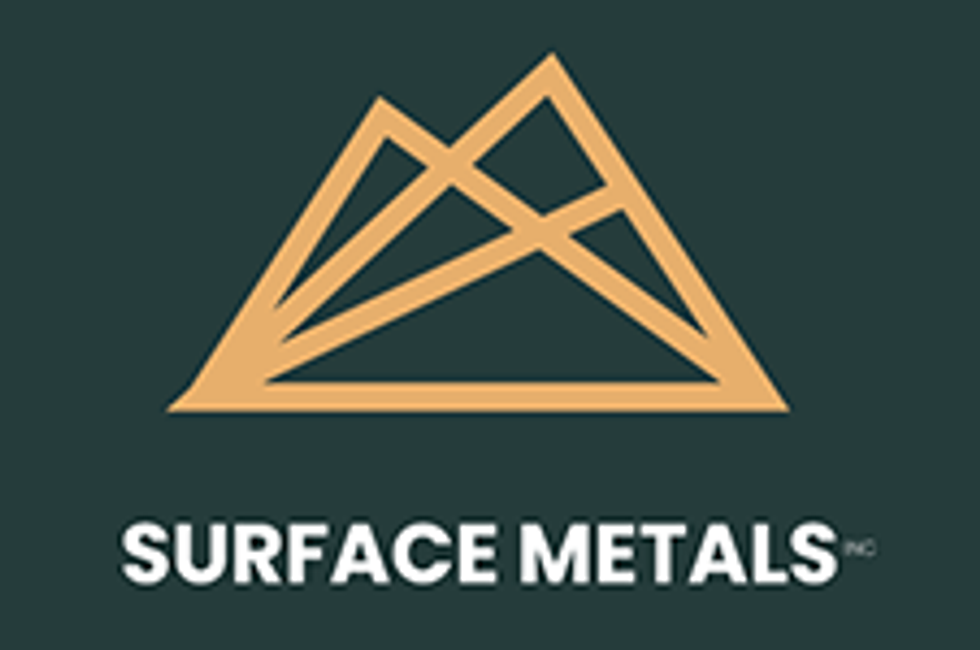
Investor Insight
As it advances its portfolio of gold assets in Western Australia’s prolific Pilbara gold province and New Zealand’s Otago Schist Belt, New Age Exploration presents a compelling investor value proposition, supported by a lean, discovery-driven strategy and an experienced technical team.
Overview
New Age Exploration (ASX:NAE) is building a pure-play gold exploration story centered on high-quality assets in tier-one jurisdictions in Western Australia and New Zealand. The company’s clear strategy is to operate in geological corridors already proven by major discoveries, while applying modern, cost-effective exploration techniques to define new zones of mineralization.

In Western Australia, the company’s Wagyu gold project is directly along strike from De Grey Mining’s Hemi discovery – now owned by Northern Star Resources (ASX:NST). In New Zealand, its projects - Lammerlaw and Otago Pioneer Quartz – lie within the same regional structure that hosts OceanaGold’s (TSE:OGC) 5 Moz Macraes deposit and Santana Minerals’ (ASX:SMI) rapidly growing Rise & Shine system.
With gold prices hovering at all-time highs, NAE’s approach favours technology-led targeting, rather than brute-force drilling campaigns, by using geophysics, geochemistry and passive seismic to zero in on structurally controlled gold systems with potential for scale.
All its projects are supported by local technical teams and seasoned exploration leadership, allowing concurrent progress and capital-efficient deployment. Recent programs at Wagyu and Lammerlaw have confirmed early-stage discoveries, and both assets are advancing through their next stages of drilling and target definition.
Company Highlights
- Pilbara and Otago Exposure: Strategic landholdings in two world-class gold regions – Pilbara (WA) and Otago (NZ) – offering dual discovery potential.
- Hemi-style Intrusion Targets: The Wagyu Gold Project shares geological features and proximity with De Grey Mining’s 11.7 Moz Hemi discovery, increasing the likelihood of a major find.
- High-grade Intercepts: Recent drilling at Wagyu returned standout intercepts including 11.2 g/t gold and 1m @ 15.6 g/t gold.
- Emerging New Zealand Gold Revival: Positioned at the forefront of a regional exploration resurgence in New Zealand’s South Island, supported by rising gold prices and favorable regulatory conditions.
- Strong Cash Position: Recently raised AU$1.96 million to fund ongoing drilling, with multiple near-term catalysts expected.
Key Projects
Wagyu Gold Project
The Wagyu gold project is New Age Exploration’s flagship asset located in the highly prospective Central Pilbara region of Western Australia. The project is strategically situated between two major gold systems – Northern Star’s Hemi Gold Deposit (11.7 Moz gold resource) and the Withnell deposit – within the Mallina Basin, which hosts a similar intrusive-style orogenic gold mineralizing system. NAE holds exploration license E47/2974, which covers 136 sq km. Since acquiring the project, NAE has conducted extensive early-stage exploration, beginning with the reinterpretation of geophysical datasets, including airborne magnetics, radiometrics and satellite imagery, to delineate potential Hemi-style intrusions and structurally hosted gold targets.

Wagyu gold project location map
The company-initiated fieldwork in April 2024, completing soil sampling, gravity surveys and passive seismic geophysical surveys to refine drill targets. These efforts culminated in an extensive aircore drilling campaign (257 holes, over 7,000 m drilled), which identified a broad, crescent-shaped gold anomaly approximately 1.5 km in strike length. Notable results included intercepts such as 5.3 grams per ton (g/t) gold over 4 m (including 15.6 g/t gold over 1 m) and 2.7 g/t gold over 2 m. Encouraged by these results, the company completed its maiden RC program in March-April 2025, drilling 3,023 m across 33 holes targeting two high-priority gravity anomalies. Assays released in May 2025 confirmed a shallow oxide gold system and evidence of underlying mineralized structures, including 1.26 g/t gold over 5 m from 31 m (WRC029), 1.32 g/t gold over 3 m from 43 m (WRC031), and 1.44 g/t gold over 2 m from 83 m (WRC009). Numerous other holes returned mineralized intervals of 0.5 to 0.8 g/t over broad zones.
Importantly, geological logging and geophysical modeling support the presence of vertical feeder structures, interpreted as potential gold-bearing intrusions and fault-hosted "pipes," similar to Hemi’s discovery model. The Wagyu system remains open in all directions, with multiple untested gravity targets and deeper feeder zones yet to be explored. A follow-up RC campaign is planned for Q3/2025, focused on extending mineralization and chasing those deeper pipe-like structures beneath the supergene blanket.
Lammerlaw Gold and Antimony Project

Lammerlaw permit occurs in the southern limb of a regional fold feature characterised by a change in metamorphic grade from upper greenschist (purple) to lower greenschist (green).
The Lammerlaw gold and antimony project is located in the Otago Schist Belt, a prolific gold-bearing region in the South Island of New Zealand. The project spans 265 sq km and is held under Exploration Permit EP60807. The area is renowned for its historic gold production and geological similarity to OceanaGold’s Macraes Mine, New Zealand’s largest active gold mine with more than 5 Moz in resources. NAE acquired the project through a competitive acreage release and has since completed desktop studies, field mapping and geochemical sampling, which identified multiple 2 to 4 km-long gold-antimony soil anomalies aligned with historical workings.
During 2023-2024, the company identified nine high-priority drill targets based on soil geochemistry (gold, antimony, arsenic, tungsten), historic production data and structural mapping. NAE mobilized a Phase 1 RC drill program in early 2025, designed to test structurally hosted vein systems within both brittle and ductile deformation zones. This work confirmed the presence of gold and antimony mineralization in several targets, though results are still under review. Access to some targets is subject to Department of Conservation approvals, which the company is pursuing concurrently. A Phase 2 drill campaign is planned for Q1/2026, pending access approvals and final interpretation of current results.
Otago Pioneer Quartz Project

Overview of prospects locations within the OPQ Gold Exploration Project.
The Otago Pioneer Quartz (OPQ) project is in Central Otago within the historic Gabriel’s Gully gold district, the epicenter of the 1860s Otago gold rush. The project lies within the same regional schist belt that hosts OceanaGold’s Macraes operation. NAE acquired the OPQ tenement to secure additional exposure to high-grade shear-hosted and orogenic gold systems in the Otago region. The area is characterized by low-sulphide gold quartz veins associated with greenschist facies metamorphic rocks and late-stage brittle faulting.
While still early-stage, the company has conducted preliminary soil sampling and mapping across the tenement to delineate mineralized structures. Historical records suggest significant past production from alluvial and hard-rock sources, though modern exploration has been minimal. Given its proximity to known gold-bearing shear zones and favourable host rocks, OPQ remains a high-priority, low-cost exploration asset for future campaigns.
Going forward, NAE intends to conduct detailed geochemical and structural mapping, followed by scout drilling at known historical workings. The project remains a capital-light optionality play with future drill programs dependent on results from Lammerlaw and Wagyu.
Management Team
Alan Broome – Chairman
Alan Broome is a highly respected figure in the Australian mining industry with more than 40 years of experience across mining, metals and mining technology. A metallurgist by training, Broome has served as chairman and director of numerous ASX-listed and private companies, contributing to significant exploration and development successes. His leadership brings deep strategic insight and a proven track record in guiding discovery-stage companies through to project advancement.
Joshua Wellisch – Executive Director
A capital markets executive with deep ASX and venture experience, Joshua Wellisch leads strategic and operational execution for NAE’s projects. Wellisch is also currently a director of NRG Capital, specialising in capital raisings, corporate structuring and the facilitation of ASX listings and was formerly managing director of Kairos Minerals Limited.
Peter Thompson – Chief Geologist
Appointed in 2025, Peter Thompson brings 35+ years of exploration leadership including stints at Western Mining, Anaconda Nickel, and as CEO of St Barbara. He led redevelopment of Beaconsfield Gold Mine, spearheaded the acquisition, listing and development of the Karlawinda gold deposit and was instrumental in the discovery and advancement of large volcanogenic massive sulphide deposits in Mongolia.
James Pope – Consulting Geologist (NZ)
James Pope is a highly experienced minerals sector professional with nearly 30 years in exploration, consulting and research across a broad range of commodities including gold, PGE, diamonds, base metals, coal and coal seam gas. He currently leads Strata Geoscience, a specialised geoscience consultancy based in Christchurch, New Zealand. Throughout his career, Pope has progressed from hands-on geological mapping and drill site supervision to leading multidisciplinary teams of up to 50 professionals delivering exploration, resource assessment, engineering and environmental services.
Kerry Gordon – Consulting Geologist (NZ)
Kerry Gordon is a seasoned minerals sector professional with nearly 25 years of experience spanning exploration, resource development and operations. He is currently a principal at Strata Geoscience, and has worked across New Zealand, Australia, Papua New Guinea, Vietnam and Mongolia on projects involving gold, critical metals (antimony, tungsten), coal, coal seam gas, and conventional petroleum. Gordon is an expert at managing exploration programs in remote and technically demanding environments, with a strong focus on field-based geological techniques, complex drilling and downhole logging operations, and logistical coordination.

Investor Insight
International Lithium offers investors exposure to the growing critical metals sector through its advanced-stage Raleigh Lake lithium-rubidium project in Ontario, early-stage copper-cobalt exploration at Firesteel in Ontario, and strategic focus on Southern Africa, all supported by strong infrastructure and a seasoned leadership team.
With strategic divestments, a robust financial position, and a focused growth strategy, International Lithium is well-positioned to meet the rising demand for lithium and other critical metals
Overview
International Lithium (TSXV:ILC,OTC:ILHMF,FRA:IAH,OTCQB:ILHMF) is a Canada-based mineral exploration company focused on the discovery and development of lithium and other critical metals essential for the transition to a cleaner, greener planet. With a portfolio of projects located in mining-friendly jurisdictions, the company’s primary objective is to build shareholder value by advancing its key assets towards production while expanding its presence in emerging critical metals regions.
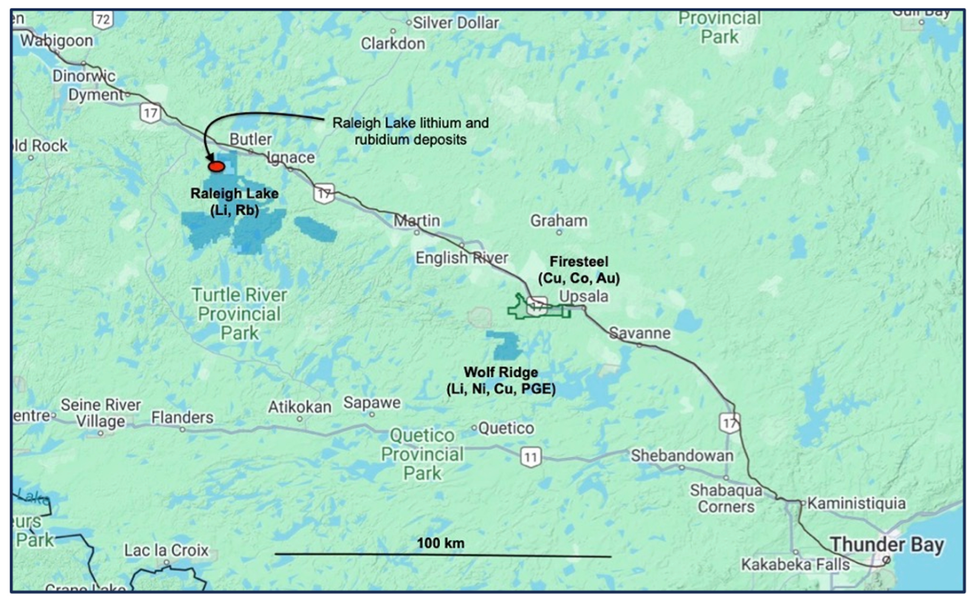
International Lithium's flagship asset is the 100 percent owned Raleigh Lake lithium and rubidium project in Ontario. A preliminary economic assessment (PEA) for the Raleigh Lake project, completed in December 2023, demonstrated strong project economics and significant resource growth potential, including an annual after-tax cash flow of C$634 million, NPV of C$342.9 million and IRR of 44.3 percent, with a nine-year mine life and project duration of 11 years. This assessment did not yet include rubidium, which represents significant additional potential pending further market analysis.
Complementing its lithium focus, the company is advancing the Firesteel copper-cobalt project in northwestern Ontario, targeting high-grade base metal mineralization to further diversify its critical metals exposure.
In addition to its Canadian projects, International Lithium is positioning for further international growth with a strategic focus on Southern Africa. It has applied for exclusive prospecting orders (EPOs) in Zimbabwe, one of the world's most prospective regions for hard rock lithium exploration.
Recent strategic divestments, including the sale of the Avalonia project stake, have strengthened ILC's financial position, enabling focused investment in its core projects.
The company is led by an experienced management team with a strong technical background in mineral exploration, project development and corporate finance. Supported by access to established infrastructure, a commitment to sustainable development practices, and a clear strategic focus, International Lithium is well-positioned to capitalize on the increasing global demand for lithium and other essential materials critical to the clean energy transition.
Company Highlights
- International Lithium is focused on developing lithium and critical metals projects in Canada and Southern Africa, aiming to deliver shareholder value through project development, strategic partnerships and project sales.
- Raleigh Lake is ILC’s wholly owned flagship lithium-rubidium project in Ontario, Canada, with a positive PEA completed in December 2023.
- ILC holds a 90 percent interest in the Firesteel copper and cobalt project in Northwestern Ontario, with exploration permits filed and drilling programs planned.
- The company has applied for exclusive prospecting orders (EPOs) in Zimbabwe and is continuing to review further exploration opportunities in Southern Africa.
- ILC is debt-free with a robust financial position. It has monetized its non-core assets, including the sale of its stake in the Avalonia project in Ireland, resulting in a C$2.5 million payment and a 2 percent net smelter royalty.
- The company is led by an experienced management team with a proven track record in advancing mineral exploration projects.
Key Projects
Raleigh Lake
The Raleigh Lake project is ILC’s flagship asset, located approximately 25 kilometres west of Ignace, Ontario. The project covers a contiguous land package of 32,900 hectares and is 100 percent owned by the company. Raleigh Lake benefits from excellent infrastructure access, situated near the Trans-Canada Highway, a Canadian Pacific Railway line, and existing natural gas and hydroelectric infrastructure.
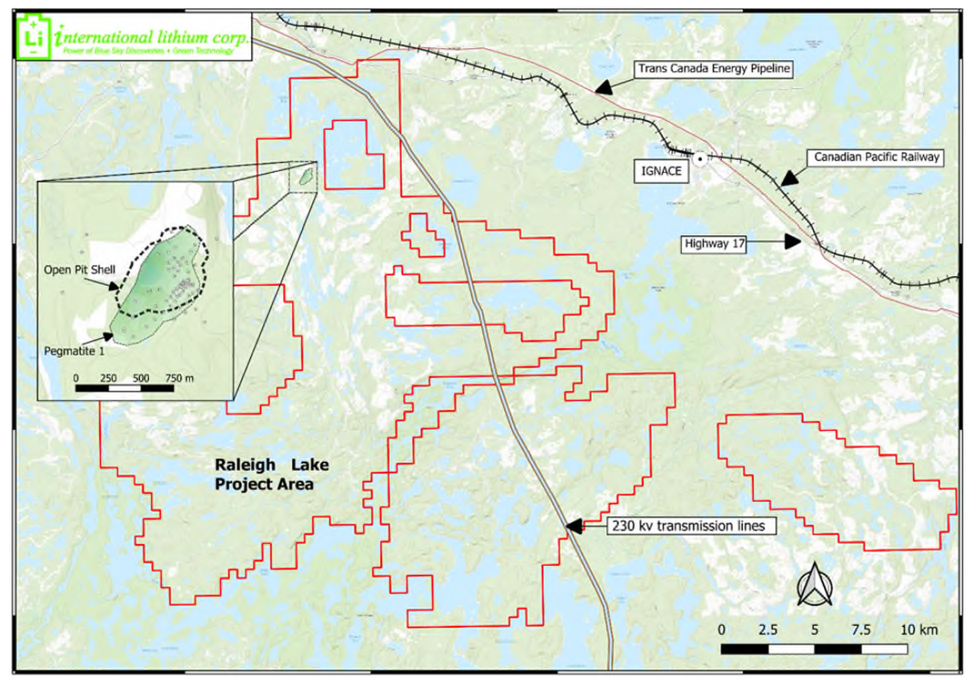
Major public infrastructure relative to the Raleigh Lake project
Raleigh Lake is notable for its dual potential to host both lithium and rubidium mineralization. The lithium is found primarily in spodumene-bearing pegmatites, while rubidium is associated with microcline-rich zones of the same lithium-cesium-tantalum pegmatite system. In 2023, International Lithium published a maiden mineral resource estimate (MRE) that delineated significant resources for both lithium and rubidium using separate cutoff criteria.
For lithium (Li₂O), the project hosts a measured and indicated resource of 5.88 Mt grading 0.79 percent Li₂O, and an inferred resource of 2.07 Mt grading 0.77 percent Li₂O, primarily within pegmatite #1. This lithium resource forms the basis of the company’s PEA, which demonstrated robust project economics with an after-tax NPV (8 percent) of C$342.9 million and an IRR of 44.3 percent.
The rubidium component, though not included in the PEA due to current market constraints, represents an additional potential value stream. The company has reported a measured and indicated resource of 133,000 tons at 6,163 ppm rubidium (0.67 percent Rb₂O) and an inferred resource of 123,000 tons at 4,224 ppm rubidium (0.46 percent Rb₂O), using a 4,000 ppm cutoff. The rubidium zones are found in association with potassic feldspar, offering a potentially recoverable byproduct pending further market and technical evaluation.
Given the project’s strong infrastructure position, mineral endowment, and defined development path, Raleigh Lake represents a compelling advanced-stage opportunity in North America's lithium supply chain. International Lithium is continuing infill and expansion drilling, environmental baseline studies, and metallurgical testing to support project advancement toward pre-feasibility.
Firesteel Project
The Firesteel project is an early-stage copper-cobalt exploration property located in northwestern Ontario, approximately 10 km west of Upsala along Highway 17. Spanning a 16-km corridor to the Firesteel River, the property lies within a geologically favorable region characterized by Archean metavolcanic and metasedimentary rocks, which are prospective for volcanogenic massive sulphide (VMS) and sedimentary copper systems.
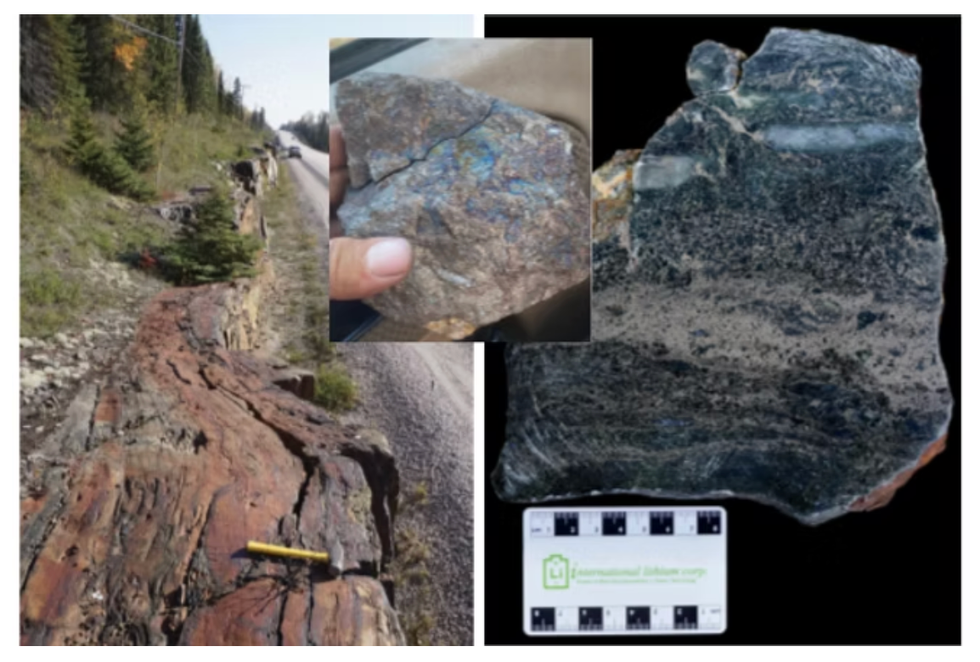
International Lithium completed the acquisition of a 90 percent interest in the Firesteel project in May 2024, aiming to diversify its critical metals portfolio beyond lithium. Historical sampling on the property has returned encouraging results, including copper assays up to 2.6 percent and cobalt values reaching 309 ppm. Notably, the "Roadside 1" occurrence features semi-massive sulphide mineralization comprising pyrite, pyrrhotite, chalcopyrite and bornite. These findings suggest the presence of a highly metamorphosed VMS or sedimentary copper system, potentially up to 20 meters wide and extending over a kilometer in length.
The project's proximity to major infrastructure, including highways and railways, coupled with its strategic location near the company's Raleigh Lake project, enhances its development potential. International Lithium plans to conduct systematic exploration, including geochemical sampling and geophysical surveys, to refine targets for future drilling campaigns.
Wolf Ridge Project
Wolf Ridge is a 5,700-hectare grassroots lithium project located 20 km southwest of Upsala and near ILC’s Firesteel copper claims. The area benefits from excellent infrastructure, including proximity to Highway 17, power, and road access.
The project was highlighted by the Ontario Geological Survey (2021–2022) for its standout lake sediment anomalies - among the highest lithium values in the region - indicating strong potential for LCT pegmatite mineralization.
Read more on page 54 of the report here.
Southern Africa Exploration Initiative
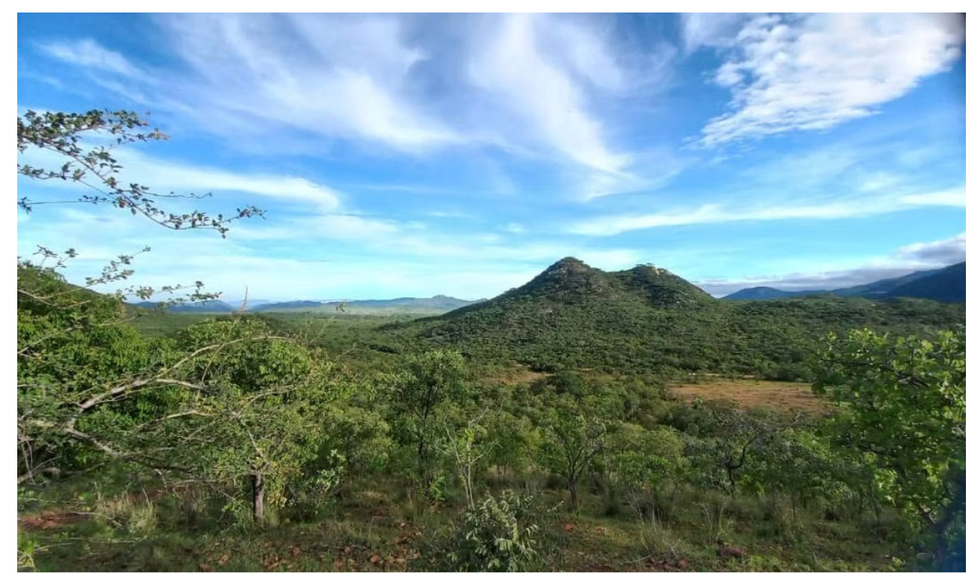
Southern Africa is recognized as a prospective region for hard rock lithium, and International Lithium’s strategic focus reflects a proactive move to establish a presence in this emerging jurisdiction.
As part of its strategy to expand its critical metals footprint, International Lithium has applied for Exclusive Prospecting Orders (EPOs) over several prospective areas in Zimbabwe. The targeted regions are known for hosting spodumene, lepidolite and petalite-bearing pegmatites, indicating potential for significant lithium resources.
Although the EPO applications are still pending approval, the company has already conducted initial due diligence, including geological reviews and desktop studies, to prioritize exploration targets once access is granted. Zimbabwe’s growing importance as a global lithium supplier, combined with favorable mining policies, offers a compelling backdrop for the company's expansion efforts. International Lithium intends to leverage its technical expertise and exploration experience to quickly evaluate and develop these opportunities upon receiving the necessary permits
Management Team
John Wisbey – Chairman and CEO
John Wisbey joined International Lithium in 2017, initially serving as deputy chairman before being appointed chairman and CEO in March 2018. Under his leadership, the company has undergone a significant transformation, including achieving 100 percent ownership of the Raleigh Lake project, divesting non-core assets, and expanding into new jurisdictions such as Zimbabwe. He founded two London AIM-listed companies: IDOX, which provides software for the UK local government; and Lombard Risk Management, which specializes in software for bank risk management and regulation. He also established CONVENDIA, a private company that specializes in software for cash flow forecasting, project valuation and M&A financial analysis. With a background in banking and financial technology entrepreneurship, Wisbey brings extensive experience in corporate leadership and strategic development. He is also the company's largest shareholder.
Maurice Brooks – Director and CFO
Maurice Brooks joined the board of ILC in 2017. He is a licensed senior statutory auditor in the UK. Since 2000, he has been a senior partner at Johnson Smith & Co. in Staines, Surrey. Before that, Brooks was a senior partner in Johnsons Chartered Accountants in the London Borough of Ealing. His commercial and investment experience includes executive directorships in manufacturing and an investment accountant role in the superannuation fund of the Western Australian state government. His early professional employment includes Ball Baker Leake LLP and LLC and Price Waterhouse Coopers-UK.
Anthony Kovacs – Director and COO
Anthony Kovacs joined the board of ILC in 2018 and has worked with the company since 2012. He has over 25 years of experience in mineral exploration and development. Before joining ILC, he held senior management roles in which he sourced and advanced iron ore and industrial minerals projects. Kovacs was involved in early-stage work at the Lac Otelnuk Iron Ore project in Quebec, Canada and the Mustavaara Vanadium Mine in Finland. Before that, Kovacs worked for Anglo American where he focused on Ni-Cu-PGE and IOCG projects. At Anglo-American, Kovacs was directly involved in several discoveries internationally. Kovacs has significant experience with industrial minerals, ferrous metals, non-ferrous metals and precious metals projects throughout the Americas, Europe and Africa.
Ross Thompson – Non-executive Director
Ross Thompson joined the board of ILC in 2017 and is the chair of the audit and remuneration committees. He is a speaker and expert in marketing behavioral science. In 1995, he founded Giftpoint Ltd. which is now one of the largest specialist promotional merchandise businesses in the UK. with offices in London and Shanghai. Giftpoint Ltd.’s clients include L’Oreal, Oracle, Ocado and Pernod Ricard among others. Thompson was president of IGC Global Promotions, one of the world’s oldest and largest global networks of premium resellers, for seven years. He is an active investor with a special interest and understanding of natural resources businesses.
Geoffrey Baker – Non-executive Director
Geoff Baker joined the board of ILC at the end of 2022 and is a member of the audit committee. He has a career in the natural resource and finance industries. He is a director of Tim Trading, a company offering consultancy services in the oil and gas industry. During his tenure as manager of Insch Black Gold Funds, Baker received the Investors' Choice Swiss Fund Manager of the Year Award. He is a co-founder of a digital collectible non fungible token CryptoChronic and of Cannastore, a pilot e-commerce website. Baker holds a bachelor's degree from the University of Windsor in Ontario.
Muhammad Memon – Corporate Secretary and Financial Controller
Muhammad Memon became corporate secretary of ILC in 2021. He has over 10 years of experience in managing finance and compliance functions of public companies in various sectors including mining exploration, investment management, real estate and technology. He assists companies with debt and equity financings, cash flow management and forecasting, legal and regulatory compliance, investor communications, stakeholder engagement and risk management. He is a member of the Chartered Professional Accountants of Canada and a fellow of the Association of Chartered Certified Accountants, United Kingdom.
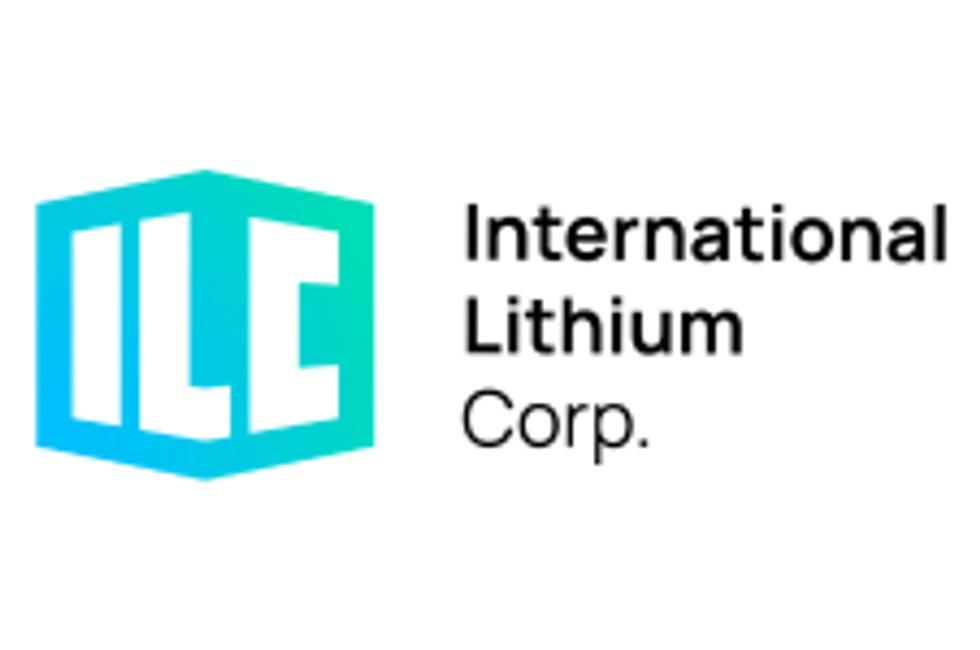
Investor Insight
Metals Australia offers investors exposure to a rapidly advancing, high-grade graphite development project in Quebec with near-term growth catalysts, backed by strong government support, battery-grade test results, and a diversified portfolio of critical, precious and base minerals assets in tier-1 jurisdictions.
Overview
Metals Australia (ASX:MLS) is a mineral exploration company with a high-quality portfolio of advanced battery minerals and metals projects in tier-1 mining jurisdictions of Western Australia and Canada. The portfolio comprises two critical minerals projects in Quebec, Canada – the Lac Carheil flake graphite project and the Corvette River gold, silver and base metals project. The Australian portfolio comprises two projects: Warrego East (copper-gold) in Tennant Creek, Northern Territory, and Manindi (vanadium-titanium, zinc) in Western Australia.
The push for net zero targets and the call from policymakers to transition to cleaner energy has intensified the focus on electric vehicles (EVs) and battery storage. EV automakers and battery manufacturers rely on essential materials such as graphite and metals, including lithium, nickel, copper and cobalt, to manufacture the batteries that are used in these vehicles and storage batteries generally. This has driven carmakers and battery manufacturers to partner with battery material suppliers under direct off-take agreements. Further, some automakers/battery manufacturers are buying equity stakes in miners, involving them directly in financing decisions for the development of mining projects. This is encouraging for companies such as Metals Australia as it actively advances its projects towards development.
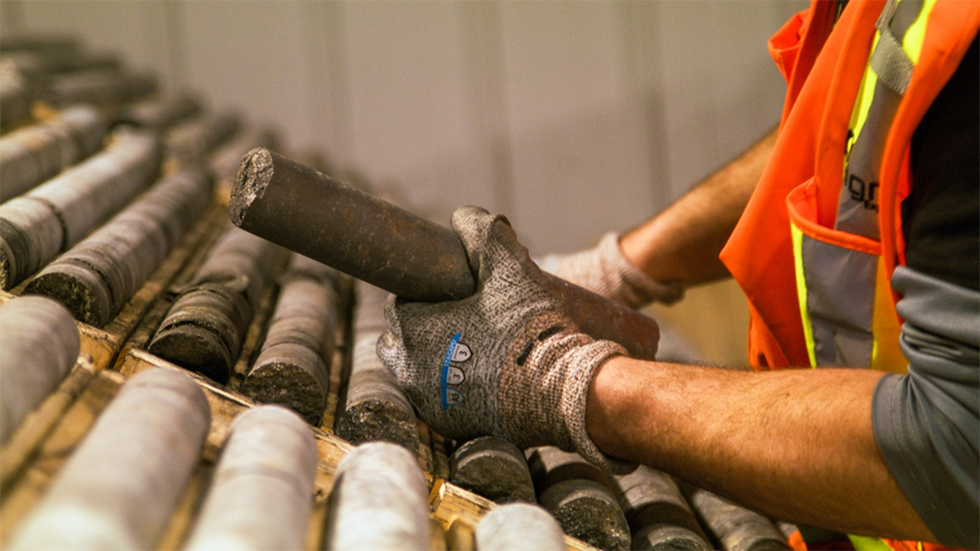
Graphite is a critical mineral required for the mass electrification of auto transportation.
Metals Australia is focused on progressing its flagship Lac Carheil flake graphite project in Quebec, Canada. The project is well-positioned to supply high quality graphite products, including battery-grade graphite, to the North American market – including for lithium-ion and EV battery production in the future. The company has completed a major winter drill program and is targeting a mineral resource upgrade in Q3 2025, with the updated resource to feed into the ongoing PFS and downstream studies.
Metallurgical work has demonstrated battery-grade spherical graphite (99.96 percent graphitic carbon) with high conversion efficiency and tap density. Downstream battery-grade purification and shaping test work is underway in Germany with ANZAPLAN.
Metals Australia is also advancing its gold silver and base metals exploration project at Corvette River, which is adjacent to Patriot Battery Metals’ world-class lithium project. Work to date has included mapping, trenching and sampling, with further drilling programs planned for 2025.
The company continues its exploration programs at its other Australian projects: Manindi (vanadium-titanium-magnetite) and Warrego East (copper-gold).
Company Highlights
- Metals Australia is rapidly advancing its flagship Lac Carheil graphite project in Quebec, Canada.
- The company holds a high-quality suite of exploration projects, including:
- gold, silver and base metals in Quebec
- vanadium, titanium and magnetite (VTM) in Western Australia (WA) – beside an already declared zinc-copper and silver mineral resource and copper-gold in the Northern Territory (NT)
- All projects are located in tier-1 mining jurisdictions (Canada and Australia) with world-class prospectivity and stable geopolitics.
- The company’s four key projects include: Lac Carheil (graphite); Corvette River (gold, silver and base metals); Manindi (vanadium-titanium-iron + zinc-copper-silver) in WA; Warrego East in the NT (copper-gold)
- A 9,482 meters winter drilling program was completed at Lac Carheil in early 2025, increasing total drilling to ~11,800 meters.
- The program added more than 4,000 m of graphitic carbon drill intercepts to the 840 m used to define the initial mineral resource.
- Graphite mineralisation has now been confirmed to be over 2.3 km of strike length, up from 1 km, on just one of 10 mapped trends.
- A mineral resource estimate (MRE) update is expected in Q3 2025 to expand the existing JORC 2012 mineral resource of 13.3 Mt @ 11.5 percent Cg, and to support an expanded mine plan.
- Only 6 percent of 36 km mapped graphite trends have been drilled to date.
- Battery-grade graphite testing confirmed:
- 99.96 percent Cg purity
- 65.3 percent battery anode conversion efficiency
- 0.97 kg/L tap density
- A pre-feasibility study (PFS) is progressing with Lycopodium, and ANZAPLAN is advancing downstream test work for a battery anode material (BAM) facility.
- A C$600,000 grant awarded to Lac Carheil from the Quebec government to support pilot metallurgy and downstream studies.
- Exploration also continues across the Corvette River, Manindi, Warrego East Projects.
- Metals Australia is led by a seasoned board and management team with extensive mining experience and a strong track record of project development.
Key Projects
Canada

Lac Carheil Flake Graphite Project (MLS 100 percent)
The 100 percent owned Lac Carheil graphite project is located in eastern Quebec, a tier-1 mining jurisdiction with strong infrastructure and government support. The project lies near the town of Fermont and has excellent access to power and logistics, including proximity to the upgraded Highway 389, nearby hydropower infrastructure, and an expanding provincial road network.

Project location, claims boundaries, graphite resource & trends, regional magnetics & sample results
The current JORC 2012 mineral resource is 13.3 Mt 11.5 percent total graphitic carbon (Cg) for 1.53 Mt of contained graphite, based on limited drilling along just 1 km of a much larger 36 km mapped trend. The resource includes an indicated resource of 9.6 Mt @ 13.1 percent Cg, and inferred resource: 3.7 Mt @ 7.3 percent Cg.
A major 9,482-meter winter diamond drilling program was completed in early 2025, increasing total project drilling to ~11,800 meters. The program defined a new southeast extension zone with multiple intersections >15 percent Cg and demonstrated graphite continuity over 2.3 km of strike length, more than double the previous extent.
The results from this drilling campaign are being incorporated into an updated mineral resource estimate, expected in Q3 2025, which will underpin the next stage of project development.
Metallurgical and battery test work has confirmed Lac Carheil’s graphite is suitable for battery-grade applications, with:
- Flotation concentrate purity of 97 percent Cg
- Spherical graphite purity of 99.96 percent Cg
- Tap density of 0.97 kg/L
- Anode conversion efficiency of 65.3 percent, exceeding global industry averages
A PFS is being led by Lycopodium Minerals Canada and is progressing in parallel with downstream battery anode (BAM) test work led by ANZAPLAN in Germany, a location study for a BAM facility, likely in Canada, and marketing and pricing assessments in collaboration with Lone Star Technical Minerals.
The project is uniquely positioned to meet North America’s surging demand for secure, domestic graphite supply, especially for EV and energy storage battery markets. It represents a strategic, high-grade, long-life source of critical material, with potential for vertical integration from mine to battery anode material.
Corvette River Gold, Silver and Base Metals Project (MLS 100 percent)

MLS’s Corvette River Project Area’s – Felicie in the northeast, West and East Eade prospects to the south of the Corvette River, 2024 & prior sample result highlights, regional geology - including greenstone belts
The Corvette River gold, silver and base metals project is located in Quebec’s James Bay region. Corvette River comprises multiple prospects including East Eade, West Eade and Felicie. The 2024 program confirmed high-grade gold and base metal zones, with trench samples of up to 29.7 g/t gold. Field programs are ongoing, with follow-up work planned in 2025.
Australian Projects
Manindi Project (MLS 80 percent)
Located in the Murchison District of Western Australia, the Manindi project includes a JORC-compliant zinc-copper-silver resource of 1.08 Mt at 6.52 percent zinc, 0.26 percent copper and 3.19 g/t silver. The project also hosts a high-grade vanadium-titanium-iron (Ti-V-Fe) discovery zone situated adjacent to the base metals resource.
Recent metallurgical test work from the Ti-V-Fe zone has produced two commercially attractive concentrates: a high-grade iron-vanadium product grading 66 percent Fe and 1.19 percent V₂O₅, and a titanium-iron product grading 43.8 percent TiO₂ and 32.0 percent Fe. The combined mass recovery from the two products exceeded 65 percent of the sample, and both products displayed low impurity levels and strong commercial potential. Further processing optimization is underway to enhance the TiO₂ grade.
The mineralised Ti-V-Fe zone remains open at depth and along strike and is hosted within a 2 km-long magnetic gabbro trend. A program of work is being finalised to support drilling to define a mineral resource within the original discovery and to test four newly identified nearby targets. These complements renewed interest in the zinc-copper-silver resource due to stronger base metal prices.
Warrego East Project (MLS 80 percent)
The Warrego East copper-gold project is located in the Tennant Creek region of the Northern Territory, near the historically significant Warrego Mine. The exploration license (E32725) is fully granted, and the mining management plan has been approved. Land access agreements have also been finalised.
Geophysical surveys have defined 11 compelling magnetic and gravity targets along a known mineralised corridor. These targets lie within a prospective structural setting that hosts several high-grade historical deposits. A field program is being prepared for execution following the wet season, alongside three additional tenement applications that aim to expand the project footprint.
Management Team
Paul Ferguson – Chief Executive Officer
A mining engineer, Paul Ferguson has over three decades of experience in the resources and energy sectors across North America, Asia and Australia. He has extensive project development and operational experience working in Canada. He has worked in oil & gas major ExxonMobil across project stages, including feasibility, design, construction, and operation. He has worked in executive level roles within Australia, including at GMA Garnet and held increasingly more senior roles with BHP (Iron Ore & Coking Coal) and then with Exxon Coal Minerals and Mobil Oil Australia during the early stages of his career.
Tanya Newby – CFO and Joint Company Secretary
Tanya Newby is a finance and governance professional with over 20 years’ experience in various corporate and commercial roles. She has a strong background in the resources sector and has provided financial advice and assistance to several publicly listed entities through exploration, project development through to the production stage. She is a member of the Institute of Chartered Accountants, member of the Governance Institute of Australia and a graduate member of the Institute of Company Directors.
Michael Muhling – Joint Company Secretary
Michael Muhling has over two decades of experience in resources, including 15 years in senior roles with ASX-listed companies. He is a fellow of CPA Australia, The Chartered Governance Institute, and the Governance Institute of Australia.
Chris Ramsay – General Manager Geology
Chris Ramsay is a geologist and project manager with over 25 years of experience in the global mining industry. He has been involved in exploration, mine development and operations for mining projects in Australasia, Southeast Asia, and parts of Africa and North America.
Board
Michael Scivolo – Non-executive Chairman
Michael Scivolo has extensive accounting and taxation experience for corporate and non-corporate entities. He was a partner/director at a CPA firm until 2011 and has since been consulting in accounting and taxation. Scivolo is on the boards of several ASX-listed mining companies, including Sabre Resources, Golden Deeps and Tennant Minerals Ltd.
Alexander Biggs – Non-executive Director
Alexander Biggs has over 20 years of experience in the mining and engineering sectors. During his career, he has been involved in various activities, including operations, consulting, finance and capital raising. He is currently the managing director of Lightning Minerals (ASX) and was previously the managing director of Critical Resources (ASX: CRR). Biggs is a member of the Australian Institute of Mining and Metallurgy and a graduate of the Western Australian School of Mines.
Rachelle Domansky – Non-executive Director
Rachelle Domansky is an ESG specialist and a consulting psychologist for businesses, governments and educational institutions in the Asia-Pacific region. In addition to Metals Australia, Domansky holds non-executive board positions at Larvotto Resources Ltd and Quebec Lithium.
Basil Conti – Non-executive Director
Basil Conti has been associated with the mining industry for over 25 years. He is a fellow of the Institute of Chartered Accountants Australia & NZ and was a partner/director of a chartered accounting firm in West Perth until 2015.

Investor Insight
With multiple significant lithium discoveries under its belt and a proven exploration strategy that yields results, Brunswick Exploration makes a compelling investment proposition in the ever-expanding lithium space.
Overview
Brunswick Exploration (TSXV:BRW,OTCQB:BRWXF,1XQ:FF) is one of North America's few publicly traded companies aggressively pursuing grassroots lithium exploration across Canada and Greenland. The company is leveraging cutting-edge exploration technologies and systematic geological fieldwork to uncover new spodumene-bearing pegmatite discoveries in underexplored districts.
Brunswick has staked and is actively exploring large-scale pegmatite fields in Quebec and both western and eastern Greenland. Its multi-regional strategy is designed to fast-track discoveries of high-grade lithium deposits to meet rising global demand driven by the energy transition.
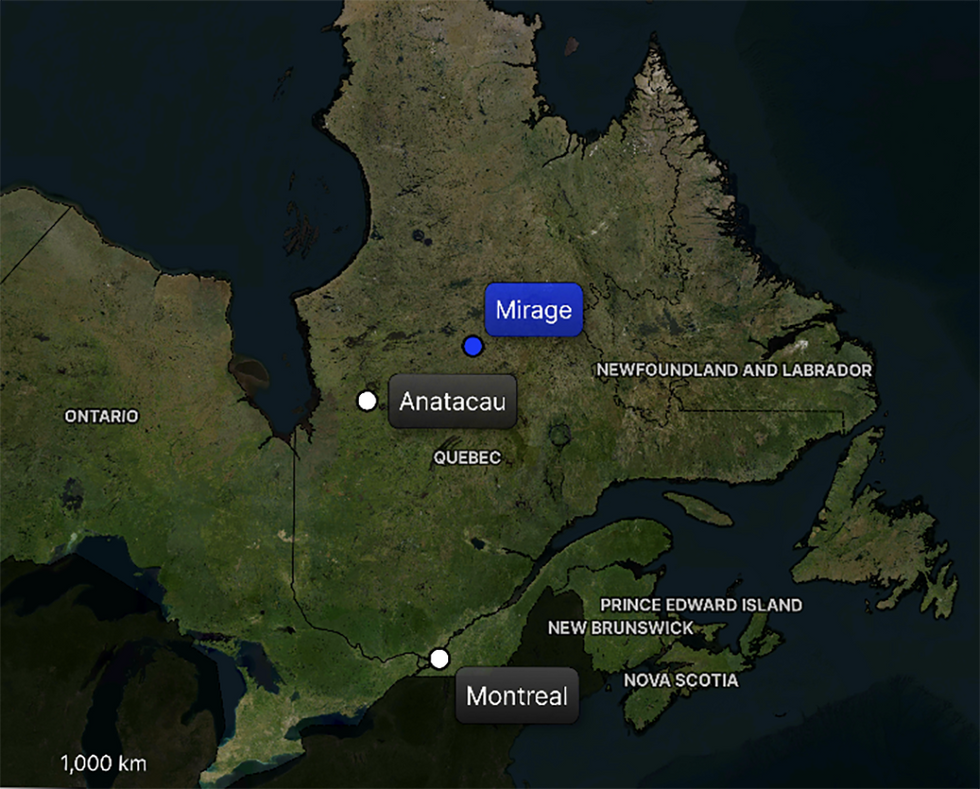
Brunswick’s exploration process begins with comprehensive data compilation and geological analysis to pinpoint promising target areas. Its experienced field teams then deploy traditional prospecting techniques—including bedrock mapping, sampling, and geophysical surveys—to validate targets on the ground. This hands-on approach has led to multiple new lithium discoveries and remains central to the company’s value creation strategy.
The company has launched an aggressive, regional-scale prospecting and mapping campaign across its extensive Greenland portfolio which will run for six weeks, supported by four field crews and two helicopters. The initial phase will see one team conducting detailed mapping and sampling around the Ivisaartoq spodumene discovery and surrounding areas. A second team will cover the expanded Nuuk and Paamiut licenses, including follow-up at the historical spodumene showing at Paamiut.
Starting in July 2025, fieldwork will pivot based on June results, with one crew continuing follow-up at Nuuk and Paamiut, and another moving to Disko Bay and Uummannaq. Findings will guide advanced exploration in August–September, including first-pass work at the newly acquired Hinksland project.
In Quebec, Brunswick Exploration has prioritized three key lithium projects in the Eeyou Istchee–James Bay region: Mirage, Anatacau, and PLEX with active drilling underway at Mirage following 2023 grassroots discoveries.
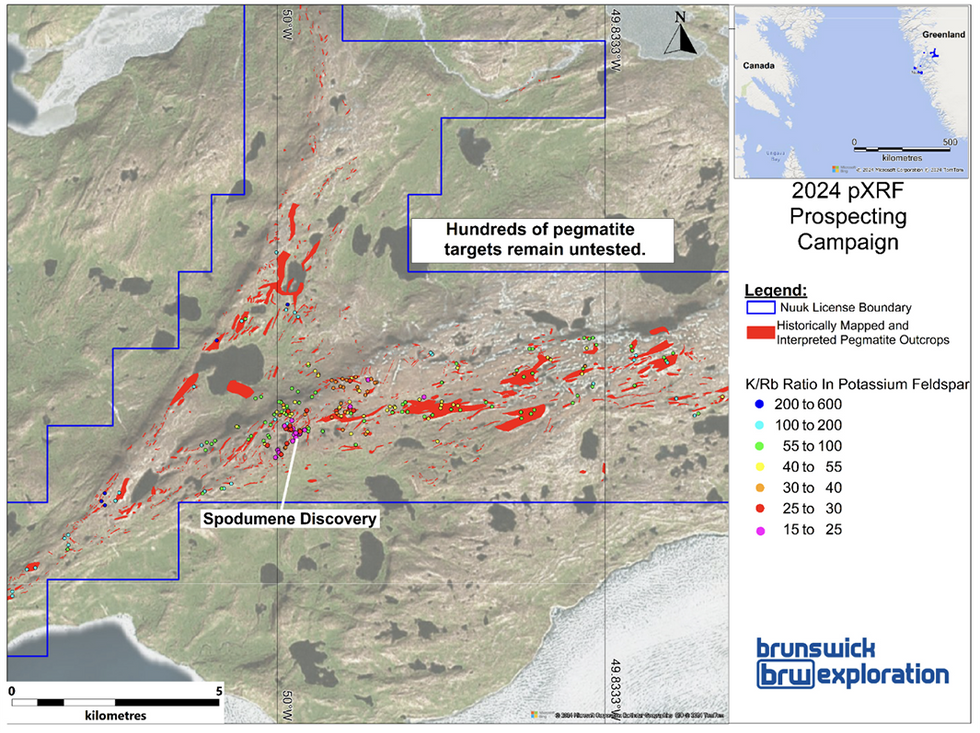
In 2024, the company made Greenland’s first lithium-bearing spodumene pegmatite discovery at the Ivisaartoq field under its Nuuk license—an area characterized by ancient Mesoarchean geology. Brunswick is now expanding its land position in both western and eastern Greenland to build on this breakthrough. In 2025, the company reported it had submitted license applications covering 20,785 hectares at Paamiut that include multiple metavolcanic amphibolite belts and nine mapped pegmatites 500–900 m in strike length, with approval pending. Brunswick had also applied for a 17,800-hectare Hinksland license in eastern Greenland containing over 50 mapped and interpreted pegmatite outcrops, including nine that are between 500 m and roughly 10,000 m in strike length, likewise awaiting government sign-off.
The exploration team is led by Executive Chairman Robert Wares, a renowned geologist and co-founder of Osisko Mining. Wares played a pivotal role in discovering the Canadian Malartic gold deposit, which became one of Canada’s largest gold producers. His leadership and exploration success provide strong technical guidance for Brunswick’s operations.
Company Highlights
- Brunswick Exploration (BRW) is a Montreal-based mineral exploration company listed on the TSXV under symbol BRW. The company is focused on grassroots exploration for lithium in Canada and Greenland, a critical metal necessary to global decarbonization and energy transition.
- This has generated one of the largest grassroots lithium portfolios globally.
- BRW's board includes Robert Wares, one of the founders of Osisko Mining.
- BRW was recognized as one of the Top 50 TSX Venture listed companies in 2023.
- The company has staked hundreds of untested prospective pegmatites measuring a minimum strike length of 500 meters and within 50 kms of infrastructure.
- In 2023, three discoveries were made in the Eeyou Istchee-James Bay region of Quebec at the Mirage, Anatacau Main and Elrond projects.
- In 2024, BRW announced a newly discovered pegmatite outcrop from its Nuuk License, making it the first confirmed lithium discovery in Greenland.
- In 2025 BRW bolstered its first-mover position in Greenland by staking about 38,500 ha across two new licenses — 20,785 ha at Paamiut (SW Greenland) hosting nine 500-900 m pegmatite trends and 17,800 ha at Hinksland (E Greenland) with over 50 mapped pegmatites, including nine 500-10,000 m trends — making BRW one of the country’s largest mineral-license holders and giving it hundreds of untested targets for lithium exploration.
Key Projects
Mirage Project
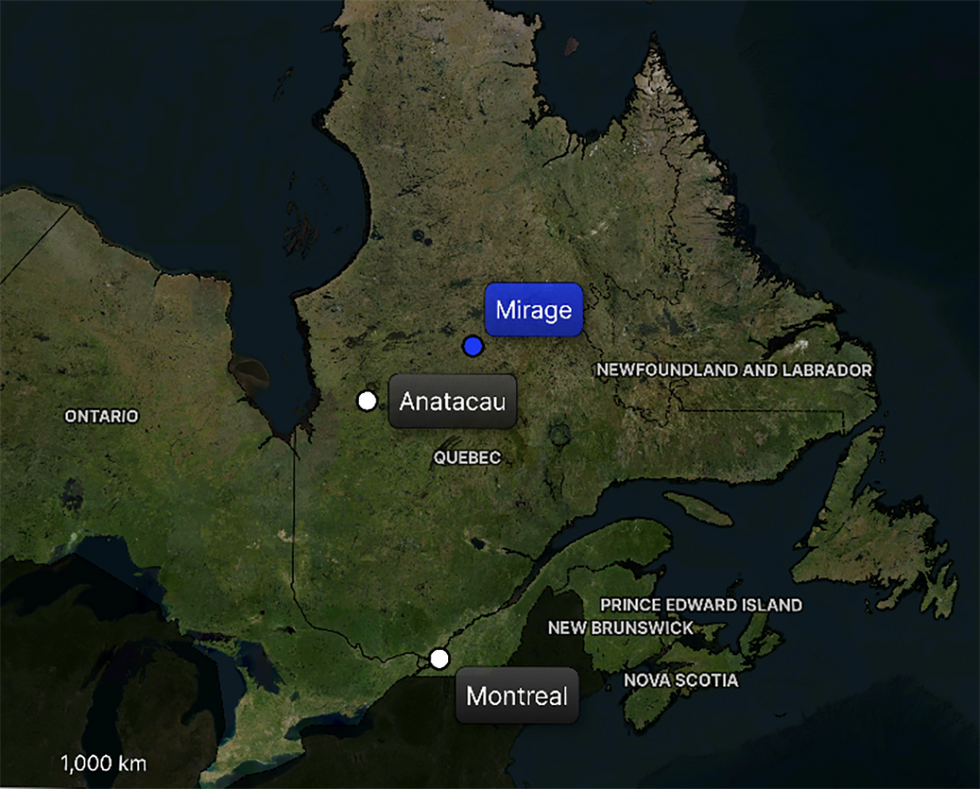
The Mirage Project consists of 427 claims covering 21,230 hectares (including both staked and optioned claims), situated approximately 40 km south of the Trans-Taiga Highway in Quebec’s James Bay region. The project was initially staked following insights from a geologist who explored the area for gold over two decades ago and documented numerous angular pegmatitic glacial boulders containing large, well-defined spodumene crystals, including one boulder measuring 8 x 4 x 3 meters.
In fall 2023, Brunswick Exploration uncovered multiple high-grade spodumene outcrops along a 2.5-km trend, alongside a distinct 3 km boulder train with different mineralogical characteristics, suggesting the presence of multiple lithium-bearing sources within the project area.
The company intersected 37 m at 1.14 percent Li₂O in hole MR-24-87 at the MR-3 dyke; 36 m at 1.51 percent Li₂O in hole MR-24-102 within the Stacked Dyke area where the same hole also cut thirteen additional spodumene-bearing dykes and 28 m at 1.32 percent Li₂O in hole MR-24-101 at the MR-6 dyke, together extending the combined MR-3–MR-6–Stacked Dyke swarm to more than 1 km by 450 m. In the past drillings, Brunswick intercepted 1.55 percent and 1.64 percent Li₂O at 93.45 m and 69.3 m respectively at the MR-6 dyke The project continues to show excellent continuity and scale, with stacked dykes and new zones being delineated through ongoing drilling.
The winter 2025 drill program covering over 5,000 meters is designed to test new extensions to MR-3, MR-4, and MR-6 dykes, as well as additional targets within the broader Central Zone. Mirage is quickly emerging as a potential high-grade, large-tonnage lithium system.
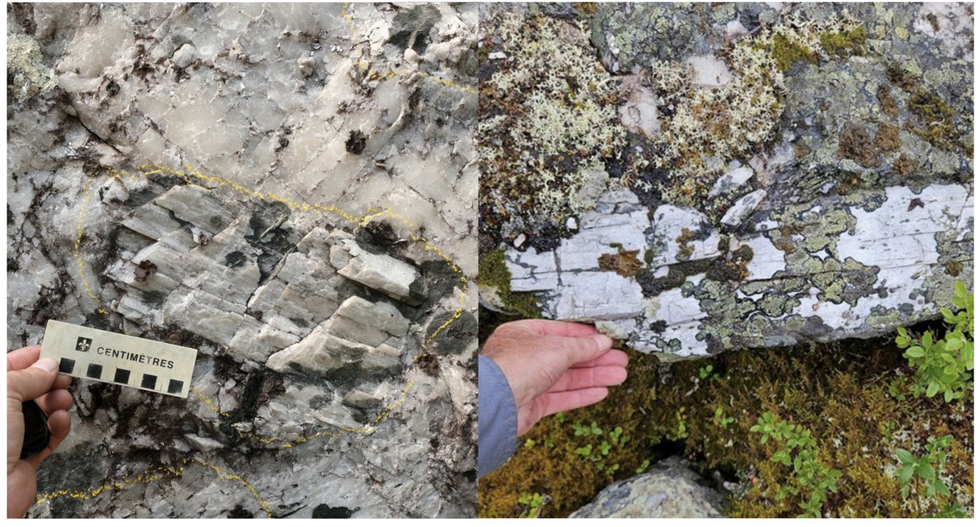
Spodumene crystals at Mirage are massive and white to pale grey, both at the surface and in the core.
In 2025, BRW has continued to advance Mirage through additional drilling and metallurgical testing. The winter drill program intersected 36 meters at 1.51percent Li2O in the Stacked Dyke area and 28 meters at 1.32 percent Li2O at the MR-6 dyke, significantly extending these pegmatites along strike. This drilling confirms that the MR-3, MR-6 and Stacked Dyke systems form a major spodumene-bearing pegmatite swarm now traced over ~1,000 by 450 meters and open in multiple directions. Phase 1 metallurgical results indicate the potential for a dense media separation (DMS)-only flowsheet (no flotation required), capable of producing a clean spodumene concentrate grading ~5.5–5.7 percent Li2O with up to 76 percent recovery and low impurities.
PLEX Project
The company is also advancing the early-stage Poste Lemoyne Extension (PLEX) project, located along the La Grande shear zone approximately 75 km west of Patriot Battery Metals’ Corvette project. PLEX consists of 375 claims covering 19,175 hectares and remains a target for future prospecting campaigns.
Anatacau
Comprising the Anatacau Main and Anatacau West projects, these assets are under an option agreement with Osisko GP, a subsidiary of Osisko Development, under which Brunswick Exploration can earn a 90 percent interest in the projects. The Anatacau property is located just east of Rio Tinto (NYSE:RIO) recently acquired James Bay Lithium deposit (previously known as the Cyr deposit), previously owned by Arcadium (NYSE:ALTM) which has a total mineral resource of 110.2 million tons (Mt) at 1.30 percent lithium oxide and a total ore reserve of 37.3 Mt at 1.27 percent lithium oxide.
BRW completed a maiden drill program at the Anatacau West property totalling 3,712 meters. 17 of the 18 drilled holes intersected spodumene mineralization that generated up to 26.5 metres at 1.51 percent Li2O.
In the summer of 2023, Brunswick discovered a significant lithium pegmatite outcrop, measuring at least 100 meters long by 15 meters wide known as the Anais showing in Anatacau Main. The outcrop is within a larger cluster of pegmatite dykes all of which contain high-grade lithium mineralization.
This discovery is located 22 km east of Anatacau West and Rio’s James Bay project along a large-scale E-W deformation corridor which is host to the known lithium-bearing pegmatite dykes in the region.

Greenland
Brunswick Exploration is now one of Greenland’s largest mineral license holders and the only company actively exploring for lithium in the country, capitalizing on a clear first-mover advantage. With supportive regulations, highly prospective geology, and excellent outcrop exposure, 2025 is set to be a breakthrough year as the company launches a major lithium exploration campaign.
A six-week regional program begins in June, with four field crews and two helicopters deployed across Brunswick’s vast land package. One team will focus on the Ivisaartoq spodumene discovery, while another targets the Nuuk and Paamiut licenses. In July, follow-up work will continue at Nuuk and Paamiut, while a second team begins prospecting at the Disko Bay and Uummannaq properties.
Initial results will guide advanced exploration phases in August and September across high-priority targets.
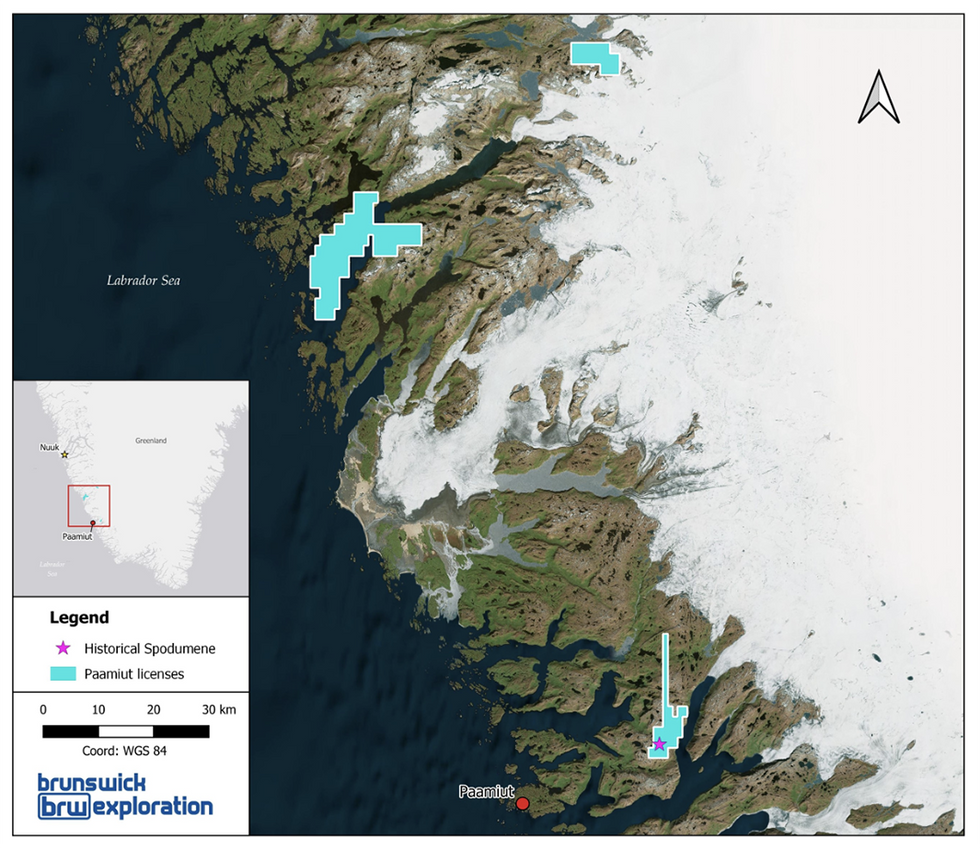
2025 Paamiut license area
Brunswick Exploration has applied for new licenses covering 20,785 hectares, approximately 90 to 130 km northeast of Paamiut, a coastal town about 260 km south of Nuuk. The area lies within the Bjornesund tectonic block of the North Atlantic Craton, a geologically favorable region comprising tonalitic and granodioritic orthogneiss and Mesoarchean metavolcanic amphibolite belts.The newly staked ground includes multiple amphibolite belts up to 1.5 km wide and 15 km long, along with nine mapped and interpreted pegmatite targets ranging from 500 to 900 meters in strike length. License applications have been submitted and are currently pending final government approval
Nuuk Expansion
Brunswick Exploration’s Nuuk holdings include the Ivisaartoq spodumene discovery within the Ivisaartoq belt. The company has applied to stake the adjacent Ujarassuit amphibolite belt, which is up to 1 km wide and 40 km long. Additional claims have been secured within the Fiskefjord Complex, located 95 km north of Nuuk and 75 km southeast of Maniitsoq, covering amphibolite belts up to 4.5 km wide and 20 km long. The newly acquired and applied-for claims span 33,138 hectares and host hundreds of mapped and interpreted pegmatite outcrops, including six targets with strike lengths between 500 and 2,000 m.
Disko Bay
The Disko Bay licenses are located roughly 30 to 80 kms from the coastal city of Ilulissat, which is the third largest city in Greenland. The licenses are near multiple seaports and container terminals, including Ilulissat. The area is situated within the Aasiaat domain, part of the Paleoproterozoic Nagssugtoqidian Orogen, sandwiched to the south by the Archean North Atlantic Craton and to the north by the Archean Rae Craton. The Orogen extends west into the Trans-Hudson orogeny of Canada that continues to the lithium deposits near Snow Lake Manitoba and the Black Hills of South Dakota.
Multiple amphibolite and metasedimentary belts were acquired with some belts being over 20 km in strike length. The new claims have hundreds of mapped and interpreted pegmatite targets with a total license area of 49,639 hectares.
Uummannaq
The licenses are located roughly 70 km from the coastal city of Uummannaq, about 80 km north of Ilulissat. Uummannaq has a population of about 1,660, an airport and a ferry terminal as well as a nearby container terminal. The area is located within the Archean Rae Craton that is intermixed with the Paleoproterozoic Rinkian fold-thrust belt, both of which are in contact with the Paleoproterozoic Nagssugtoqidian Orogen to the south.
The new license contains multiple amphibolite and metasedimentary belts with dozens of mapped and interpreted pegmatites with a total license area of 9,770 hectares.
Management Team
Robert Wares - Executive Chairman
Robert Wares is a professional geologist with more than 35 years of experience in mineral exploration and development. He was responsible for discovering the Canadian Malartic bulk tonnage gold mine, which was subsequently developed by Osisko Mining into one of Canada's largest gold producers. Wares was a co-winner of the Prospectors and Developers Association of Canada's "Prospector of the Year Award" for 2007. He was also named one of the "Mining
Men of the Year" for 2009 by the Northern Miner. He has a Bachelor of Science and an honorary doctorate in earth sciences from McGill University.
Killian Charles - President and CEO
From 2017 to 2021, Killian Charles worked as VP of corporate development for Osisko Metals. Charles was previously the manager of corporate development at Integra Gold Corp, which was an advanced-stage gold development company until it was acquired by Eldorado Gold in July 2017. He worked as a mining analyst at Industrial Alliance Securities and Laurentian Bank Securities. Charles covered small and mid-cap exploration and production companies as a mining analyst. Charles holds a Bachelor of Science with a major in Earth and planetary sciences from McGill University.
Anthony Glavac - CFO
Anthony Glavac has more than 17 years of experience in financial reporting, including over 12 years in the mining industry. Since August 2017, Glavac has served as vice-president, and corporate controller for Falco Resources, and previously served as director, financial reporting and internal controls at Dynacor Gold Mines. Glavac spent 10 years at KPMG, working with both public and private companies, providing audit, taxation, strategic advisory and public offering services. Glavac is also involved with other public companies in the mining industry.
Simon Hébert - Vice-president, Development
Simon Hébert is a professional geologist with over 13 years of experience in mineral exploration, having begun his career with Virginia Mines and Osisko Mining. He has worked on numerous metallogenic projects across Baie-James, Nunavik, and the Northwest Territories. In 2019, he helped form NQ Mining Investment, becoming its general manager in 2023. A member of the Ordre des Géologues du Québec since 2012, Hébert also serves as vice president of the AEMQ and is chair of the Table Jamésienne de concertation minière. He holds a BSc in Geology from Université Laval.
François Goulet - Exploration Manager, Quebec
François Goulet holds a master’s degree in structural geology from UQÀM and has extensive exploration experience in James Bay and internationally. He was recently president and CEO of Harfang Exploration, a gold project generator in Quebec. Goulet has worked with companies including Virginia Mines, Unigold, Maya Gold & Silver, the Canadian Malartic Partnership, and Glencore Canada. He is a board member of the AEMQ and a registered geologist with the Ordre des géologues du Québec since 2011.
Charles Kodors - Exploration Manager, Atlantic Canada
Charles Kodors is the Manager, Atlantic Canada at Brunswick Exploration Inc. and has been with the company since January 2021. Having 15 years of experience in the mining and exploration industry, he most recently served as an exploration manager for Osisko Metals and a senior exploration geologist for Kirkland Lake Gold. Kodors received his B.Sc. from Brock University and is a registered professional geologist within the provinces of New Brunswick, Newfoundland, Nova Scotia, Ontario, Quebec, Manitoba and Saskatchewan.
Shayaan Belluzzo – Corporate Secretary
Ms. Shayaan Belluzzo is a seasoned Corporate Secretary with over 8 years of experience of board governance and compliance, corporate restructuring matters for various global entities and investment vehicles, focusing on corporate regulatory and corporate governance best practices, and providing strategic legal support. Recently, Belluzzo also held key roles as Corporate Secretary of Windfall Mining Group and Assistant Corporate Secretary of Osisko Mining, supporting both companies during a $2.16 billion acquisition. Ms. Belluzzo’s diverse industry experience stems from her work in global investment, asset management, and law firms, including McCarthy Tétrault LLP.
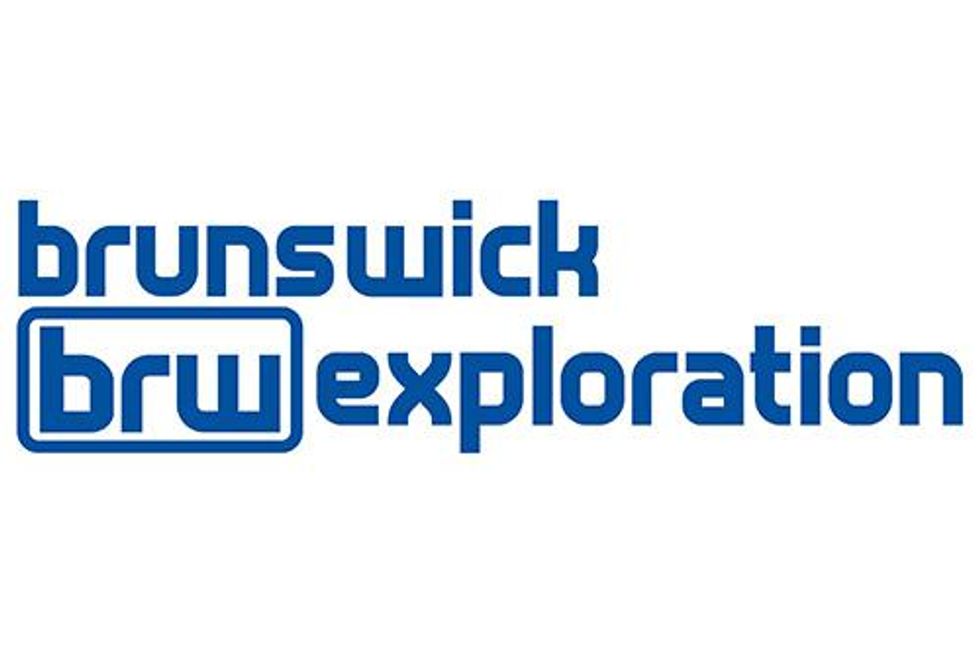
Browse Companies
MARKETS
COMMODITIES
CURRENCIES
